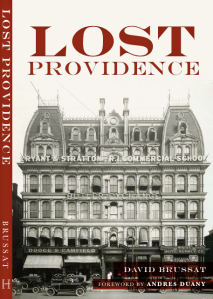Tonight I saw the documentary The Human Scale, about the work of Jan Gehl, a Dane who has sought, as I put it in last night’s post, to undo some of the damage done by modernism to the space between buildings in cities. It was an extraordinarily depressing film, in part because it seemed to wallow in the overwhelming scale of the lack of human scale inflicted upon the world, especially Asia, by modernism. It would be hard to make anything human of the space between the buildings with which modernism has carpet-bombed China and Japan.
The film opened with shots of what looked like really depressed people occupying tedious offices in those bleak buildings. They turned out to be the film’s own talking heads, including Jan Gehl, all of whom generally had good suggestions for how to cure the ills between these buildings. Eventually they got around to good things being done between buildings in Copenhagen, New York City and elsewhere. But they never got around to the question of whether the lack of human scale that is intrinsic to modern architecture had anything to do with the anomie between the buildings. Are ugliness and sterility making it more difficult to encourage people to use the space between buildings?
I wanted to ask about that after the panel also mostly declined to address the question, but feared that a question about architectural style might cast me as the skunk at the garden party, sponsored by CNU-New England and AIAri. (Normally I’d revel in such a role but I wimped out for some reason.)
The panel had redirected the documentary’s concerns to Providence, and to the question of how to animate Kennedy Plaza. Most of the buildings that create the walls of the “outdoor room” of KP and Burnside Park are delightful, but don’t have much street-level retail. So instead of asking why Jan Gehl didn’t seem to care about the lack of human scale in the buildings between which his chief interests lie, I asked whether the panel was interested in an idea I heard two decades ago from Morris Nathanson, of Pawtucket, for animating Waterplace Park, which was new then. That idea is described briefly near the end of a column I wrote, which I reprint, courtesy of the Providence Journal:
What to do at Waterplace
April 27, 1995ON TUESDAY, I nuked leftovers and carried them to Waterplace for lunch. There were no empty benches, so I sat down on a granite block at the base of the amphitheater, leaning against a granite bollard, from which perch I could watch both the city skyline beyond the park and the people inside it. These were a couple score at 1:30, including a half-dozen young office workers sunbathing on the grand staircase and lawn.
The Boston Globe’s architecture critic, Robert Campbell, recently characterized Waterplace Park as a setting worthy of Verdi’s opera Aida, written to commemorate the opening of the Suez Canal. He may not have realized that next year an opera company actually hopes to put on Gilbert and Sullivan’s Gondoliers at Waterplace. Until then, Shakespeare will have to do. URI’s theater department will put on free performances of Romeo and Juliet May 27 and 28.
Campbell correctly stated in his article of April 14 that plays, concerts and other occasional events are not enough to animate a new urban park such as Waterplace. Commerce, such as restaurants and shopping, is mandatory. But while we wait for land on the river to be developed, the city Parks Department plans bread and circuses for spring and summer: The department’s belated celebration of Earth Day, with an expo, kayak tours, etc., is this Sunday; the Rhode Island Songwriters Festival, June 3 and 4; bungee jumping at ESPN’s Extreme Games, June 28, 29, 30 and July 1; the Clock Tower Concerts at lunch on June 20, 22, 27, 29; and Concerts on the Half Shell on July 12, 19, 26, Aug. 2, 9, 16, 23.
These activities, also free, are set. For more information, call Bob Rizzo, of Parks, at (401) 785-9450. Other possible events include: part of the Providence Waterfront Festival; the Boat Basin Blues Festival, Aug. 12; a Harvest Festival with barge hay rides, pumpkin contests and “other foolishness”; a river walkers’ club; and a Small Ships Festival in July.
The last brings to mind a wonderful New Yorker cartoon by Charles Addams, in which little boys launch toy sailboats while a little boy on the other side of the lake launches a toy submarine. (Was this the same little boy who would one day launch a French restaurant in our town?) [Inside joke reference to Bob Burke, the owner of Pot au Feu who had recently said he wished that Memorial Boulevard should have been built at the same level as the Woonsquatucket River so that people in cars would be more able to detect its presence – never mind that the height difference insulates the river walks from car noise.]
The restaurant the city had hoped to launch at Waterplace in July will not open, so the city will not be able to use its rent to fund events, as it had planned. Therefore, sponsors are being sought for some of the above events. Meanwhile, the city has put out a new request for proposals to operate a permanent restaurant (five bids are in so far).
Patrons of even the most fascinating events grow hungry, of course. After I read three weeks ago that the city “plans to have food vending carts in Waterplace,” I phoned Pawtucket’s own Morris Nathanson, the famous designer of restaurants, to see what he thought. We met for drinks at a restaurant (whose interior he had designed) near Waterplace. He was not keen on the idea of vending carts.
Problem was, he didn’t think most cart owners would expect that they could make enough money at Waterplace. Not enough people. The city, he predicted, would find few bidders. Nor does this idea sound especially elegant, although such carts do have their proper place on the urban scene.
Nathanson suggested instead what he called the taverna system, widely used in Greece, under which an established restaurant or hotel sponsors an underused space a block or a mile away, and finds, say, a young fellow who will sell its food and drink to as many passersby as he can attract to tables, often under umbrellas, provided by the establishment. The fellow profits if he can, the establishment gets free advertising, and the city gets additional street vitality, cost-free. And visitors are charmed by the sight of waiters porting meals along the streets. [This is the idea that could help connect Kennedy Plaza to nearby restaurants.]
In fact, the Westin Hotel has proposed what amounts to a temporary taverna on all three terraces of Waterplace Pavilion, and awaits the city’s response. The Westin’s manager, Tim Kirwan, seems to have a lot of interesting ideas for Waterplace, not the least titillating of which are boat rentals and a custom ice cream program.
Thankfully, the city’s bid request for temporary food service does not seem to envision Waterplace as a free-for-all among competing food carts. It seems to foresee one “vendor” with a food and beverage license leasing space to other vendors, presumably with tables and chairs, on the terraces of the pavilion and along the banks of the river.
Much better. In any event, it looks as if there will be more to do at Waterplace this summer than watch beauty (architectural and otherwise) while munching leftovers – which is fine, thank you, for now.
* * *
David Brussat is a Journal-Bulletin editorial writer and columnist. His address on the Internet is: davidbrussat@projo.com.




Reblogged this on Disconnected Landscapes.
LikeLike